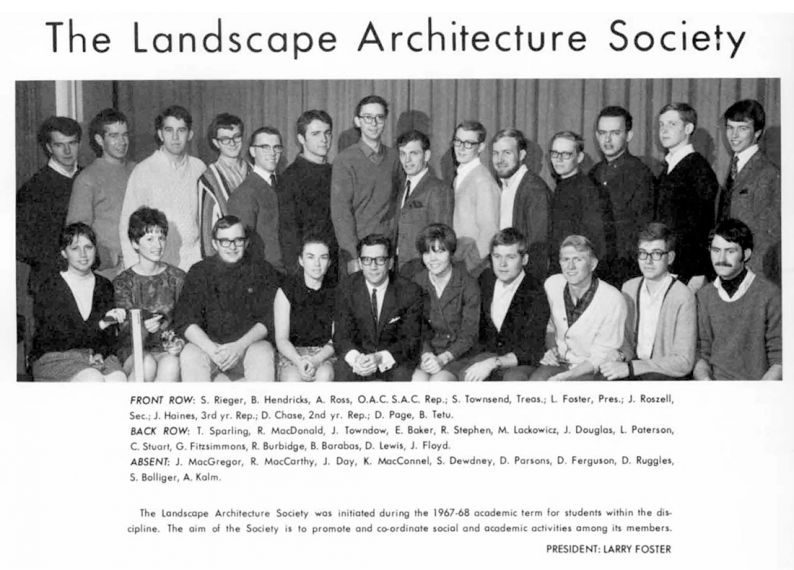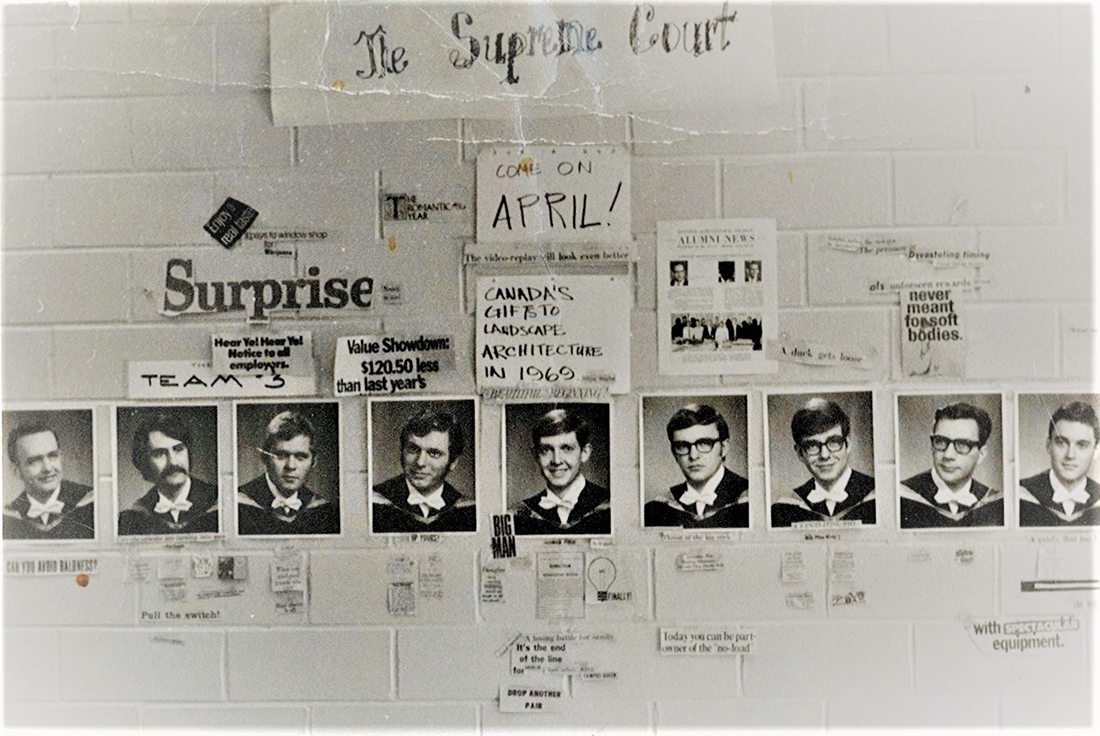Landscape Architecture at U of G – The Founding Years

2020 marks the 55th year since the Landscape Architecture program opened it’s doors at Guelph for the first time. After a premature start the previous year, 1965 marked the admission of 13 students (a 14th transferred later) and the school was underway. Faculty included Vic Chanasyk, founding director, Jack Milliken, assistant professor, and Bill Lytle, sessional instructor. For this class, Jack Milliken was their mentor and spiritual leader as he once explained, “we have no precedents so we are going to drive you as hard as we can to establish a foundation for future classes and set the standard for the program”.
The idea for the school was originally formulated in about 1962 and the driving forces behind the landscape architecture program were Dean Rick Richards (OAC 1962-1972), Dr. R.J. Hilton, Head of Horticulture, and Norman Scott, member of the University’s Board of Governors. Vic Chanasyk joined the faculty of horticulture in 1962 and was charged with developing a curriculum and proposal for a new landscape architecture program. The newly minted School was originally housed in the Horticulture Building in 1965 and moved to the newly renovated seed building where it has remained since 1968 and officially opened in March 1969.
During the period 1965-1969, enrolment was capped at 13 students per year in-order to maintain an ideal student/faculty ratio. The quota for the School thus remained at 110 students for several years.Two influences then impacted the explosive growth around 1970:
- The number of applicants skyrocketed when students learned of the success of the program and the burgeoning job market which had only begun to explode. Untapped opportunities at the federal, provincial and municipal levels as well as start-up private practices were in abundance. It was the era of the ecological movement;
- As financial constraints on the part of the universities in Ontario became a reality, the intake was increased to 30 students per year.

L to R: Bela Barabas, Brian Tetu, John Haines, Larry Paterson, Doug Lewis, Allan Ross, Don Page, Larry Foster, Bill Dempsey. Absent: Jerry Fitzsimmons
The Class of ’69 at Guelph was the first graduating class in Canada and 2019 marked their 50th anniversary. (University of Toronto, in an attempt to catch up, grabbed 2 students from the class of ’70 and graduated them in the spring of 1970).
This Class of ’69 graduated 10 and was comprised of Bela Barabas, Bill Dempsey, Jerry Fitzsimmons, Larry Foster, John Haines, Doug Lewis, Don Page, Larry Paterson, Allan Ross and Brian Tetu. As pioneers, this small group opened many doors to the profession which sequentially precipitated a tidal wave of employment opportunities.
‘69 also did something that the author doesn’t believe has been accomplished by any class since. After graduation, this group, some obtaining MLA’s and others Masters’ degrees in related fields, moved on as follows:
- Graduate School: 5 (UBC, U. of Michigan, Georgia Tech/University of Georgia and Harvard)
- Private sector: 2
- Public sector: 2
- Left profession: 1
Six graduates of this class compiled brief biographies which are featured in the LAAA 2020 Newsletter showing how they influenced the early days. Three are still very much active in private practice and continue to spread the word and their influence in the natural and built environments.
Currently, the Landscape Architecture program has 305 students enrolled (BLA: 261 & MLA: 44).